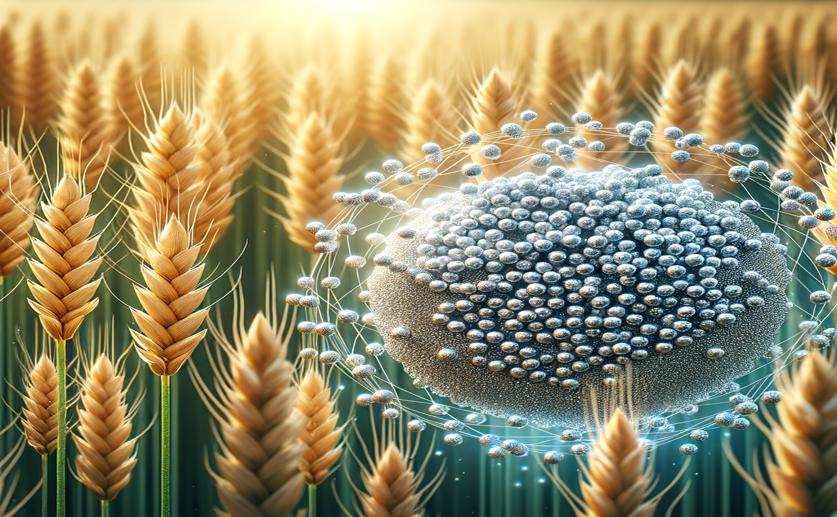
Silver Nanoparticles Help Control Wheat Diseases and Preserve Seed Quality
Jenn Hoskins
10th August, 2024

Image Source: Natural Science News, 2024
Key Findings
- The University of North Bengal study found that silver nanochitosan (Ag-NC) at 0.5 mg/mL completely inhibited the growth of fungal pathogens Aspergillus flavus and A. niger in wheat seeds
- Nano-priming wheat seeds with Ag-NC significantly reduced fungal load, improved seed germination rates, and enhanced levels of essential proteins and nutrients
- The study confirmed that Ag-NC nanoparticles are safe for agricultural use, showing no cytotoxic effects on human cell lines at the tested concentration
AgricultureBiotechPlant Science
References
Main Study
1) Effect of silver nanochitosan on control of seed-borne pathogens and maintaining seed quality of wheat
Published 9th August, 2024
https://doi.org/10.1186/s42483-024-00260-x
Related Studies
2) Factors Influencing the Antibacterial Activity of Chitosan and Chitosan Modified by Functionalization.
3) Nanobrass CuZn Nanoparticles as Foliar Spray Nonphytotoxic Fungicides.
4) Potential benefits and phytotoxicity of bulk and nano-chitosan on the growth, morphogenesis, physiology, and micropropagation of Capsicum annuum.
5) Comparative study on antifungal activities of chitosan nanoparticles and chitosan silver nano composites against Fusarium oxysporum species complex.



 26th July, 2024 | Jenn Hoskins
26th July, 2024 | Jenn Hoskins